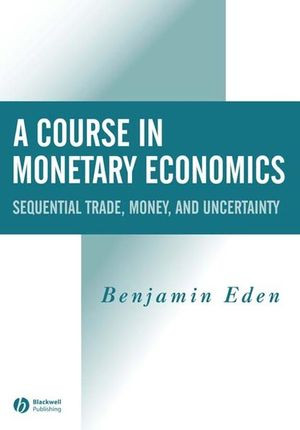

Most ebook files are in PDF format, so you can easily read them using various software such as Foxit Reader or directly on the Google Chrome browser.
Some ebook files are released by publishers in other formats such as .awz, .mobi, .epub, .fb2, etc. You may need to install specific software to read these formats on mobile/PC, such as Calibre.
Please read the tutorial at this link: https://ebookbell.com/faq
We offer FREE conversion to the popular formats you request; however, this may take some time. Therefore, right after payment, please email us, and we will try to provide the service as quickly as possible.
For some exceptional file formats or broken links (if any), please refrain from opening any disputes. Instead, email us first, and we will try to assist within a maximum of 6 hours.
EbookBell Team

4.4
92 reviewsThe inventive analysis explores an extensive range of topics including the optimum quantity of money, optimal monetary and fiscal policy, and uncertain and sequential trade models. Additionally, the text contains a simple general equilibrium version of Lucas (1972) confusion hypothesis, and presents and synthesizes the results of recent empirical work. The text is rooted in the author's years of teaching and research, and will be highly suitable for monetary economics courses at both the upper-level undergraduate and graduate levels.Content:
Chapter 1 Overview (pages 1–25):
Chapter 2 Money in the Utility Function (pages 26–56):
Chapter 3 The Welfare Cost of Inflation in a Growing Economy (pages 57–71):
Chapter 4 Government (pages 72–85):
Chapter 5 More Explicit Models of Money (pages 86–99):
Chapter 6 Optimal Fiscal and Monetary Policy (pages 100–122):
Chapter 7 Money and the Business Cycle: Does Money Matter? (pages 123–146):
Chapter 8 Sticky Prices in a Demand?Satisfying Model (pages 147–154):
Chapter 9 Sticky Prices with Optimal Quantity Choices (pages 155–169):
Chapter 10 Flexible Prices (pages 170–181):
Chapter 11 Preliminaries (pages 179–196):
Chapter 12 Does Insurance Require Risk Aversion? (pages 197–201):
Chapter 13 Asset Prices and the Lucas “Tree Model” (pages 202–209):
Chapter 14 Real Models (pages 207–249):
Chapter 15 A Monetary Model (pages 250–260):
Chapter 16 Limited Participation, Sticky Prices, and UST: A Comparison (pages 261–279):
Chapter 17 Inventories and the Business Cycle (pages 280–301):
Chapter 18 Money and Credit in the Business Cycle (pages 302–312):
Chapter 19 Evidence from Micro Data (pages 313–326):
Chapter 20 The Friedman Rule in a UST Model (pages 327–332):
Chapter 21 Sequential International Trade (pages 333–355):
Chapter 22 Endogenous Information and Externalities (pages 356–368):
Chapter 23 Search and Contracts (pages 369–384):